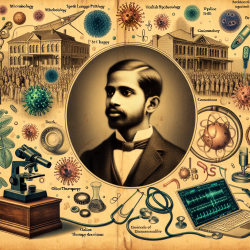Oral health is a crucial aspect of overall well-being, yet it remains one of the most unmet health needs for children, particularly those from underserved communities and those with special healthcare needs. A recent study titled "Toothbrushing and Oral Care Activities of Autistic and Non-Autistic Latino Children" sheds light on the unique challenges and strategies in maintaining oral health among these groups.
Key Findings from the Study
The study observed 85 videos of oral care routines from 18 Latino families, with children aged 6 to 12 years, including 10 autistic and 8 non-autistic children. Here are the significant findings:
- Parental Involvement: Autistic children required more parental support in their oral care routines compared to non-autistic children. This support ranged from verbal cues to physical assistance.
- Modifications: Parents of autistic children often used habitual and sensory modifications to facilitate toothbrushing. This included using timers, electric toothbrushes, and altering the brushing environment to make it more tolerable for the child.
- Technique and Duration: Both groups showed room for improvement in brushing technique and duration. Autistic children, however, more frequently brushed for the recommended two minutes, often due to the use of timers.
- Supplementary Oral Care: Both groups rarely incorporated flossing and mouthwash into their routines, highlighting a need for further education and integration of these practices.
Practical Tips for Practitioners
Based on these findings, practitioners can implement several strategies to improve oral care among autistic and non-autistic Latino children:
- Parental Education: Educate parents on the importance of their involvement in their child's oral care routine. Provide them with strategies for effective verbal cues and physical assistance.
- Use of Modifications: Encourage the use of habitual modifications like timers and sensory modifications such as dimming lights or using different toothbrush textures to accommodate the child's needs.
- Technique Training: Demonstrate proper brushing techniques to both children and parents, emphasizing the importance of brushing at the gum line and using circular motions.
- Incorporate Supplementary Care: Stress the importance of flossing and using mouthwash, especially for children at higher risk of caries. Provide practical tips on how to seamlessly integrate these practices into the daily routine.
Encouraging Further Research
While this study provides valuable insights, further research is needed to explore the applicability of these findings to other segments of the Latino population and to develop targeted interventions. Practitioners are encouraged to stay informed and contribute to ongoing research efforts.
To read the original research paper, please follow this link: Toothbrushing and Oral Care Activities of Autistic and Non-Autistic Latino Children.










